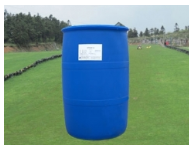The principle of surfactant oxygenation: adding surfactant to aquaculture water can increase the saturation solubility of oxygen in aquaculture water. According to hydrate formation theory and double membrane theory, because the solubility of oxygen in water is very small, water oxygenate usually forms at the gas-liquid interface, and then slowly diffuses from the gas phase to the liquid phase. In the water containing surfactant, due to the solubilization of surfactant, a large amount of oxygen is dissolved in the surfactant micelles formed in the aqueous solution. Thus, the formation of water oxygenates in the surfactant aqueous solution can occur not only at the gas-liquid interface, but also within the water body, which reduces the formation time of water oxygenates and improves the oxygen content in water Solubility in.

Generally speaking, biosurfactant has excellent performance in pollution control. Due to the strict requirements of biosurfactant production conditions such as temperature and pressure, the product extraction is difficult, and the separation and extraction of tile products and the purification process of crude products are complex. Therefore, the scale of biosurfactant fermentation production in China is small and the product price is high. Therefore, the cost and other parties are considered Surface factor biosurfactants have not been widely used in soil remediation.
The application of biosurfactants is often beneficial in the near future. When biosurfactants are selected for bioremediation, new, efficient and low toxic biosurfactants should be developed. Carbon sources similar to the pollution sources should be selected to ferment biosurfactants. Low and effective concentration of biosurfactants should be applied directly to the oil contaminated environment Sex agent producing bacteria or bacterial agents are good choices to improve the repair efficiency. A kind of
However, the extensive application of biosurfactants in bioremediation needs: 1) optimizing the screening, culture conditions and extraction methods of Biosurfactant Producing Bacteria; 2) genetic improvement of Biosurfactant Producing Bacteria by means of genetic engineering, in order to obtain high-yield bacteria and reduce the production cost of biosurfactants, biosurfactants are widely used in bioremediation However, the safety of genetically engineered strains released into the environment should be considered.